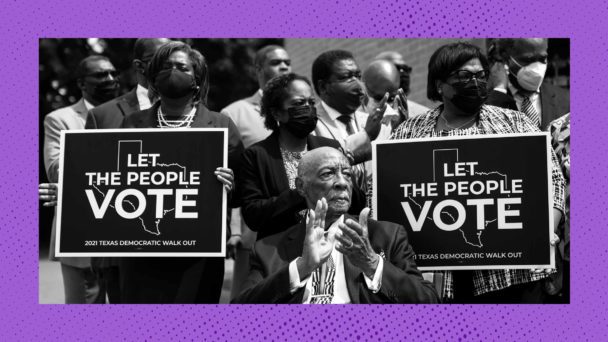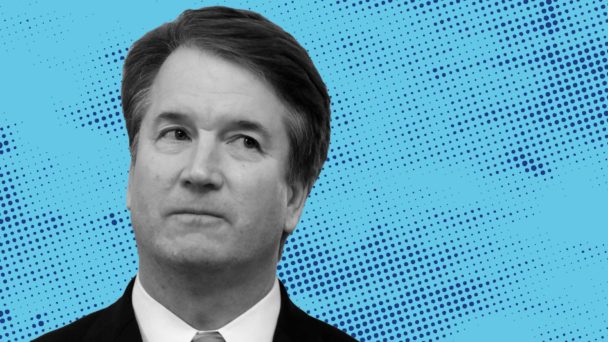After nearly a century of failing to implement the Constitution’s prohibition on racial discrimination in voting, Congress enacted the Voting Rights Act of 1965. But in the years that followed, the Supreme Court interpreted the VRA stingily, as it tends to do with civil rights legislation, and said that voters had to prove that the curtailment of their voting rights was intentionally motivated by racism. So in 1982, Congress amended Section 2 of the VRA to make it easier to bring and win voting rights cases; people did not, in fact, need to develop an X-ray capable of identifying whether a legislative body had racist bones.
Since then, regular people have brought and won these cases over 165 times. Especially in recent years, after the Supreme Court sabotaged other sections of the VRA, voters have relied on Section 2 to challenge practices and policies that result in the “denial or abridgement of voting rights on the basis of race.”
In November 2023, however, a three-judge panel of the U.S. Court of Appeals for the Eighth Circuit held that individuals don’t have the right to bring these cases at all. Last week, the full Eighth Circuit denied the voters’ request for an en banc rehearing, functionally affirming the finding that allowing people to fight racial discrimination in voting was, in fact, a decades-long mistake. Whoopsidaisies!
This is a nonsense argument that can’t be squared with the purpose of the VRA, past practice, or judicial precedent. It fits right in, though, with a distinctly dangerous way that courts are betraying the people they are supposed to serve: Not only are courts blowing off their responsibility to protect people’s rights, they’re blocking actors outside the courts from protecting people’s rights too.
This particular mess arises from a 2021 Supreme Court decision called Brnovich v. Democratic National Committee. In Brnovich, the six Republican justices voted as a bloc to create new, more challenging standards for people to win Section 2 cases, effectively rewriting the actual standard set by Congress as the justices saw fit. But that wasn’t enough for Justice Neil Gorsuch, who, in a concurring opinion joined by Clarence Thomas, floated the idea that people shouldn’t be able to bring Section 2 cases in the first place. He wrote that the Court had only ever “assumed without deciding” that people can sue under Section 2—sort of in the way one might assume what goes up must come down—and called it “an open question.”
To even raise this “question,” Gorsuch had to ignore the Court’s history of relying on a Senate report accompanying the 1982 Amendments: In Morse v. Republican Party of Virginia in 1996, the Court acknowledged the Senate’s assertion that “the existence of the private right of action under Section 2 has been clearly intended by Congress since 1965.” Gorsuch also had to ignore the text of the Act, which refers to “a proceeding instituted by the Attorney General or an aggrieved person under any statute” to enforce the Constitution’s voting guarantees.

When a person of color asks you to “take the Voting Rights Act seriously” (Getty Images)
Nevertheless, a Trump-appointed district judge decided to answer Gorsuch’s “open question” the following year in NAACP v. Arkansas Board of Apportionment. A coalition of voting rights groups led by the Arkansas NAACP filed a Section 2 lawsuit alleging that the state’s electoral district maps unlawfully diluted Black voting strength. Judge Lee Rudofsky admitted that the Arkansas NAACP made “a strong merits case,” but he dismissed the case anyway because he concluded the plaintiffs didn’t have the right to sue.
Unlike Gorsuch, Rudofsky at least mentioned Morse’s discussion of the Senate’s statements about Section 2, but disregarded them as “not only dicta, but dicta based on methods of interpretation that the Supreme Court has long since abandoned.” He also waved away the statute’s explicit reference to aggrieved voters’ ability to bring cases under statutes that enforce the Constitution by saying that the VRA is not a statute that enforces the Constitution. Because the 1982 amendments rejected the Court’s singular focus on proving racist intent, Rudofsky says Section 2 strays well beyond “the far narrower guarantees in the Fourteenth and Fifteenth Amendments.” Consequently, Rudofsky decided, Section 2 can be enforced by the federal government, or it can’t be enforced at all.
Relying solely on federal enforcement of the VRA is like trying to survive a tidal wave in a rinkydink rowboat. The government alone doesn’t have the resources to identify and litigate every instance of voter discrimination as it happens. And even if it could, it might not want to, depending on who is in charge: Making enforcement depend on the federal government alone would effectively make the VRA optional when Republicans are in the White House.
The Eighth Circuit’s decision to deny en banc rehearing means that tens of millions of voters under the Circuit’s jurisdiction—Arkansas, Iowa, Minnesota, Missouri, Nebraska, North Dakota, and South Dakota—have no way of protecting their own voting rights. As Chief Judge Lavenski Smith wrote in dissent from the panel decision, “Rights so foundational to self-government and citizenship should not depend solely on the discretion or availability of the government’s agents for protection.”
This isn’t the only instance where courts have stepped in to prevent voters and legislatures from implementing policies that promote inclusive democracy. When Arizona voters used a ballot initiative to limit the corrosive impact of money in politics, the Supreme Court said they couldn’t do that. When Congress established a system requiring states with a track record of discriminatory voting laws to run new voting laws by the Justice Department, the Supreme Court said they couldn’t do that either. These moves doubly undermine democracy by disempowering the public and concentrating what power remains in the unelected branch. The takeaway is conservative judges aren’t satisfied with not sticking up for you—they also want to prevent you from sticking up for yourself.




